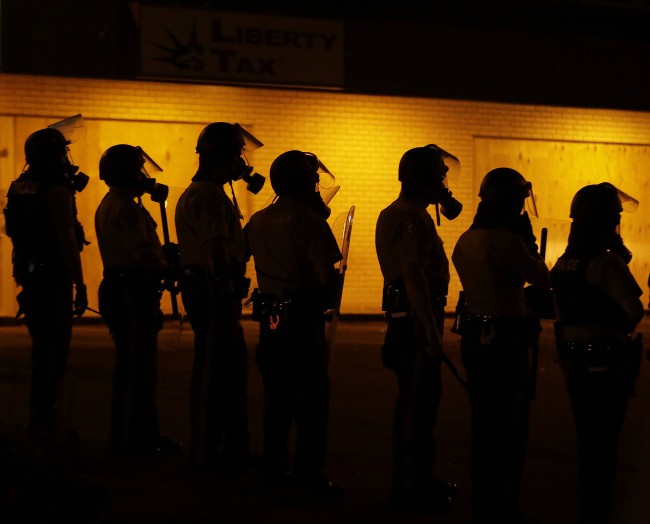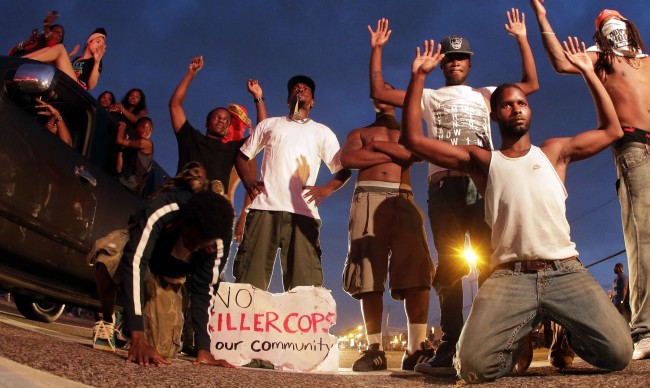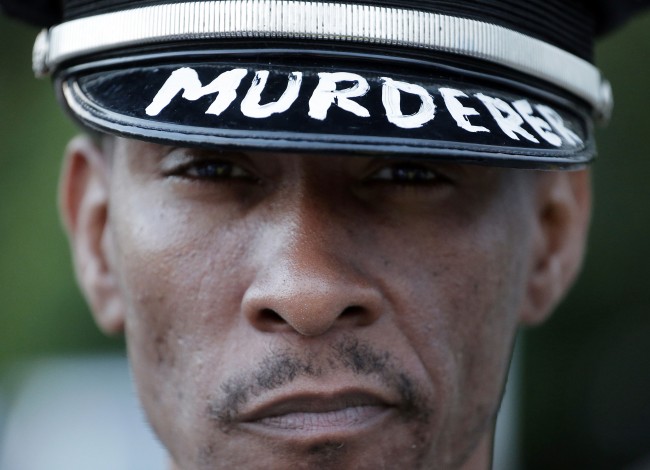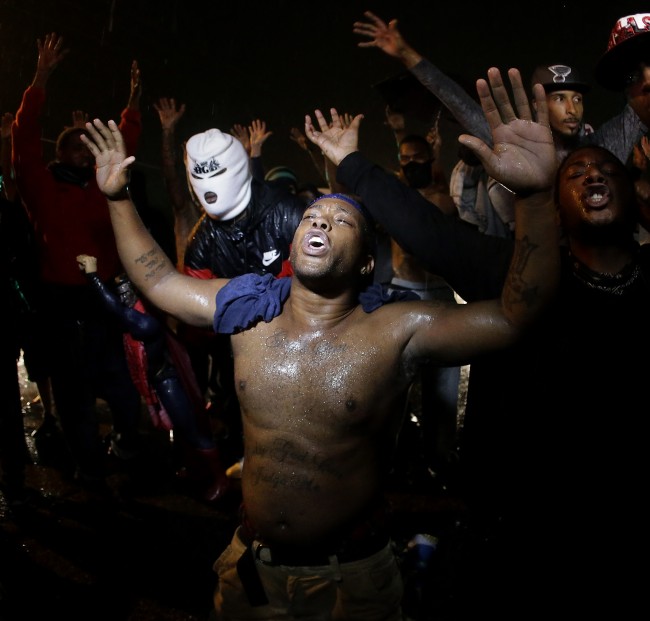Michael Brown: Shot Six Times, Once Through The Skull For Being Black And Non-Compliant

MICHAEL Brown was shot six times by polcie in Ferguson , Missouri. So says a private autopsy.
The New York Times says one bullet pierced the top of Brown’s skull. Four bullets hit his right arm. None hit him in the back.
Brown, 18, was unarmed.
In Ferguson, the locals are under a midnight curfew imposed by Gov. Jay Nixon.
Defy the ban and police fire teargas at you. Arrest you.
You are denied the right to protest.
You must protest at an hour that suits the people you are protesting against.
You must remain indoors and await their knock at the door.


A PR fight is also underway.
Missouri State Highway Patrol Capt. Ron Johnson, whose agency is now in charge of security in Ferguson, has met Brown’s family. He says the meeting “brought tears to my eyes and shame to my heart… When this is over, I’m going to go in my son’s room. My black son, who wears his pants sagging, who wears his hat cocked to the side, got tattoos on his arms, but that’s my baby.”
Pathetic.
His son is alive. To compare the alive with the dead is weak. He then gave throat to more PR balls:
“We all need to thank the Browns for Michael. Because Michael’s going to make it better for our sons to be better black men.”
By being dead?

Ferguson police waited six days to publicly reveal the name of the officer and documents alleging Brown robbed a convenience store shortly before he was killed. Police Chief Thomas Jackson said the officer did not know Brown was a robbery suspect when he encountered him walking in the street with a friend.
Nixon said Sunday on ABC’s “This Week” that he was not aware the police were going to release surveillance video from the store where Brown is alleged to have stolen a $49 box of cigars.
Does the punishment fit the crime? Is nicking a box of scrappy cigars worth a death penalty any more than jaywalking is?
“It’s appeared to cast aspersions on a young man that was gunned down in the street. It made emotions raw,” Nixon said.
More balls.
Michael Brown was shot multiple times. He was unarmed. Police were not under attack. They were not defending themsleves with reasonable force.
“When you’re exhausted, when you’re out of resources, when you’re out of ammunition, you surrender,” Brown’s uncle, pastor Charles Ewing, told worshippers during a Sunday sermon at Jennings Mason Templein Ferguson. “He surrendered and yet he died.”
Who shot Michael Brown?
The officer who shot Brown has been identified as Darren Wilson, a six-year police veteran who had no previous complaints against him. Wilson has been on paid administrative leave since the shooting, and the department has refused to say anything about his whereabouts. Associated Press reporters have been unable to contact him at any addresses or phone numbers listed under that name in the St. Louis area.
Also Sunday, about 150 people gathered in St. Louis to show support for Wilson. The crowd protested outside a TV station because it had broadcast from in front of the officer’s home.
What are we looking at in Ferguson?
Throughout the week, combat vets have remarked that St. Louis County’s finest were better equipped for combat than some U.S. forces in Afghanistan and Iraq. Tear gas filled the air as police roamed the streets in armored vehicles.
Federal grants helped arm hundreds of police departments like St. Louis County for war. The Clinton, Bush and Obama administrations all supported federal money to arm local cops for an invasion of Fallujah.
Against this insane armament, libertarian Radley Balko was the clearest, most consistent voice. Other libertarians and a few conservatives joined Balko, the author of books on the militarization of police, and they found common cause with many liberals.
There’s another problem in Ferguson that calls up some wisdom shared by libertarians and conservatives: When you consider the police shooting of Michael Brown, the riots that followed, the crackdown in response, and the heightened protests after that, the whole situation between the town and the police was one of Us vs. Them.
But for the people of Ferguson, or of any town, shouldn’t a policeman (or any public servant) be “one of us”? Ferguson is 70 percent black. Its police force is almost all white.
This is a cause of some problems, but the result of another: The people of Ferguson don’t see their neighbors when they look at the police. Ferguson’s cops aren’t merely armed occasionally like an invading army; they are, every day, outsiders.
“If you can find a single person in this community who trusts the police,” Corey Crawford of Ferguson told the Washington Post last week, “that is like finding a four-leafed clover.”
But not that lucky.
Posted: 18th, August 2014 | In: Reviews Comment | TrackBack | Permalink


